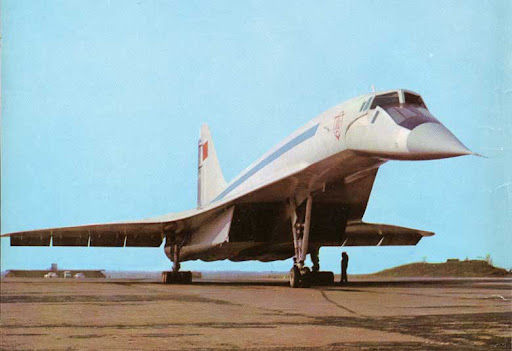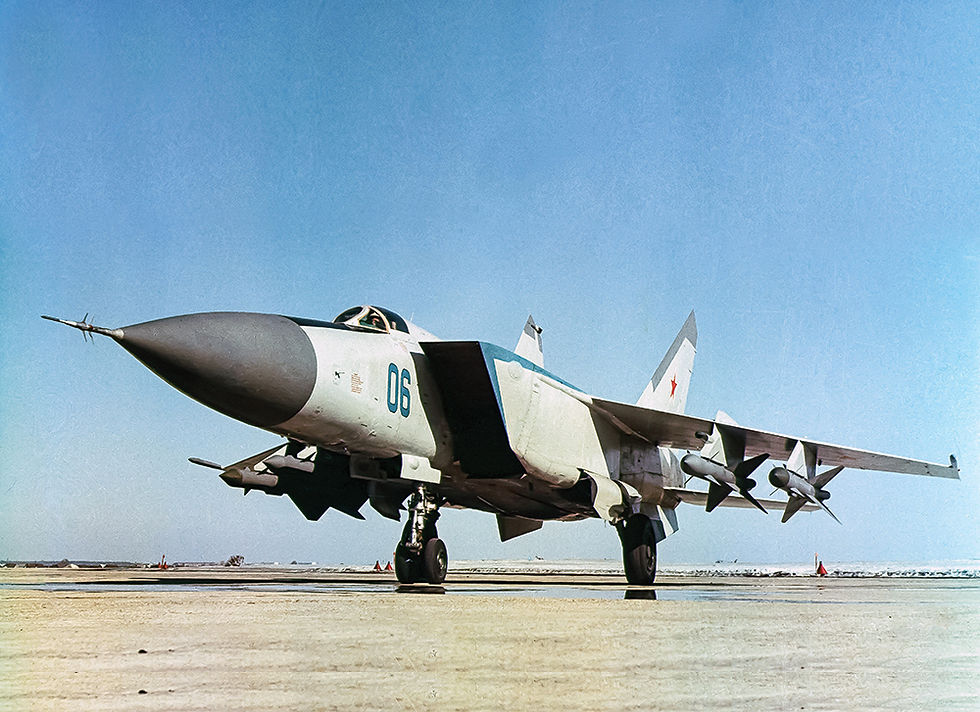The Supersonic Swan Song: A Look at the Tu-144 and its Technology
- thiliwriting
- Mar 7, 2024
- 5 min read

The roar of jet engines breaking the sound barrier is a sound synonymous with human ambition and technological prowess. In the midst of the Cold War, this ambition materialized in the form of supersonic passenger jets, aircraft capable of flying faster than the speed of sound. The Soviet Union's answer to the Anglo-French Concorde was the Tupolev Tu-144, a majestic yet troubled aircraft with a fascinating story.
A Race for Supersonic Supremacy:
The 1950s and 60s witnessed a fervent race in the aviation industry to develop supersonic passenger jets. The United States, the Soviet Union, and a joint European effort all strived to create the first commercially viable supersonic airliner. The Soviets, under the leadership of the legendary aircraft designer Andrey Tupolev, embarked on the Tu-144 program.
Early Designs and Technological Innovations:
The Tu-144 design incorporated several innovative features. Unlike the Concorde's delta wings, the Tu-144 sported a unique "double-delta" configuration, offering better low-speed handling characteristics. Another distinctive feature was the "canard" – a small set of horizontal wings located at the front of the fuselage – which could be adjusted during takeoff and landing to improve control.
The Tu-144 boasted four powerful turbojet engines, the RD-36-51, capable of generating immense thrust. To withstand the intense heat generated at supersonic speeds, the Tu-144's fuselage was constructed from a combination of titanium and steel. This innovative use of titanium, a rare and expensive metal at the time, was a testament to Soviet engineering ambition.
A Troubled First Flight and Questions of Originality:
On December 31, 1968, the Tu-144 prototype made its maiden flight, beating the Concorde to the skies by a mere two months. This early achievement fueled Soviet pride and fueled speculation about potential espionage. While the final production model differed significantly from the prototype, accusations persisted that the Tu-144 heavily borrowed from Concorde's design. The Soviets vehemently denied these claims, insisting their aircraft was an independent development.
Operational Challenges and Safety Concerns:
Despite its impressive technology, the Tu-144 suffered from several operational challenges. The RD-36-51 engines were notorious for their high fuel consumption and limited range. Additionally, the Tu-144 generated a significant sonic boom, making it unsuitable for overland supersonic flight and restricting its commercial viability.
Furthermore, the Tu-144 was plagued by safety concerns. Several high-profile accidents, including a crash at the 1973 Paris Air Show that claimed the lives of crew members and spectators, cast a dark shadow over the program. These incidents raised questions about the aircraft's overall design and engineering.
A Limited Commercial Career:
Despite the challenges, Aeroflot, the Soviet national airline, launched limited passenger service with the Tu-144 in 1975. However, the economic and environmental drawbacks, coupled with safety concerns, limited the Tu-144's commercial success. The flights were primarily used for cargo and eventually ceased altogether in 1983.
A Legacy of Technological Achievement and Unfulfilled Potential:
The Tu-144's story is a bittersweet one. It represented a significant technological feat for the Soviet Union, showcasing their advancements in materials science, aerodynamics, and jet engine technology. However, its operational challenges, safety issues, and limited commercial success ultimately overshadowed these achievements.
Beyond the Passenger Version: The Tu-144's Military Applications:
While the passenger version of the Tu-144 wasn't a commercial success, the Soviets did develop military variants of the aircraft. The Tu-144D, for instance, served as a reconnaissance platform, utilizing its speed and high altitude capabilities to gather intelligence. Additionally, the Tu-144LL served as a flying laboratory for testing new technologies and training pilots for high-speed aircraft.
The Tu-144 and the Future of Supersonic Travel:
The Tu-144 program ended in the early 1990s with the collapse of the Soviet Union. However, its legacy continues to influence the development of future supersonic aircraft. Newer designs aim to address the challenges faced by the Tu-144, such as fuel efficiency, sonic boom reduction, and environmental impact.
A Look Back: Lessons Learned and the Road Ahead:
The story of the Tu-144 offers valuable lessons for future endeavors in supersonic passenger travel. The importance of addressing fuel efficiency, environmental concerns, and safety is paramount. Additionally, the Tu-144 highlights the complexities of balancing technological ambition with commercial viability.
The Tu-144 stands as a testament to the ambition and innovation of the Soviet aviation industry. It pushed the boundaries of technology and briefly captured the world's imagination with its supersonic prowess. However, its operational challenges, safety concerns, and limited commercial success ultimately hampered its journey.
While the Tu-144 never achieved widespread commercial adoption, its legacy extends beyond its limited operational history. It serves as a reminder of the complexities of developing and deploying supersonic passenger jets. The lessons learned from the Tu-144 program continue to inform and influence the development of future supersonic aircraft.
Today, renewed interest exists in bringing back supersonic travel. New designs are emerging, promising to address the challenges faced by the Tu-144, such as noise reduction, fuel efficiency, and environmental impact. As these developments progress, the Tu-144 serves as a historical touchstone, reminding us of both the triumphs and tribulations associated with the pursuit of supersonic flight.
Beyond the Technical: The Human Story of the Tu-144
It's important to acknowledge that the story of the Tu-144 extends beyond the technical aspects. The program involved countless engineers, designers, test pilots, and support personnel who dedicated their expertise and even risked their lives to bring this aircraft to life. Their contributions deserve recognition, even if the program itself did not achieve widespread success.
The Tu-144's story also serves as a window into the broader context of the Cold War. It represents a period of intense technological competition between the superpowers, where national pride and strategic considerations often overshadowed economic realities. Understanding this historical context allows for a more nuanced appreciation of the Tu-144's development and ultimate fate.
The Tu-144 stands as a testament to the ambition and innovation of the Soviet aviation industry. It pushed the boundaries of technology and briefly captured the world's imagination with its supersonic prowess. However, its operational challenges, safety concerns, and limited commercial success ultimately hampered its journey.
While the Tu-144 never achieved widespread commercial adoption, its legacy extends beyond its limited operational history. It serves as a reminder of the complexities of developing and deploying supersonic passenger jets. The lessons learned from the Tu-144 program continue to inform and influence the development of future supersonic aircraft.
Today, renewed interest exists in bringing back supersonic travel. New designs are emerging, promising to address the challenges faced by the Tu-144, such as noise reduction, fuel efficiency, and environmental impact. As these developments progress, the Tu-144 serves as a historical touchstone, reminding us of both the triumphs and tribulations associated with the pursuit of supersonic flight.
Beyond the Technical: The Human Story of the Tu-144
It's important to acknowledge that the story of the Tu-144 extends beyond the technical aspects. The program involved countless engineers, designers, test pilots, and support personnel who dedicated their expertise and even risked their lives to bring this aircraft to life. Their contributions deserve recognition, even if the program itself did not achieve widespread success.
The Tu-144's story also serves as a window into the broader context of the Cold War. It represents a period of intense technological competition between the superpowers, where national pride and strategic considerations often overshadowed economic realities. Understanding this historical context allows for a more nuanced appreciation of the Tu-144's development and ultimate fate.
The Tu-144 may not have revolutionized passenger travel, but its legacy remains significant. It serves as a reminder of the challenges and opportunities associated with pushing the boundaries of aviation technology. As the future of supersonic travel unfolds, the lessons learned from the Tu-144 program will undoubtedly play a role in shaping the next generation of supersonic aircraft.



Comments